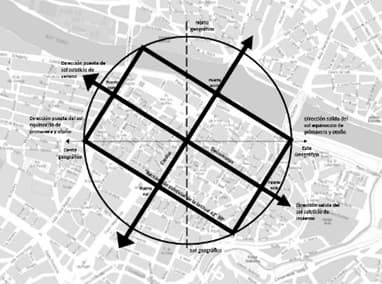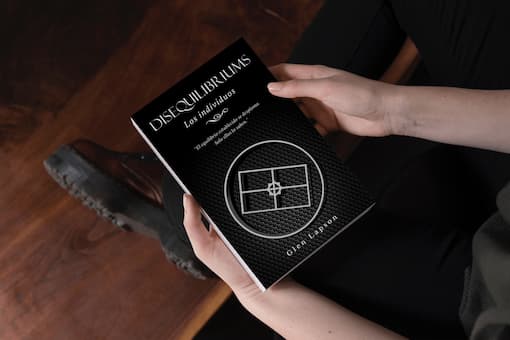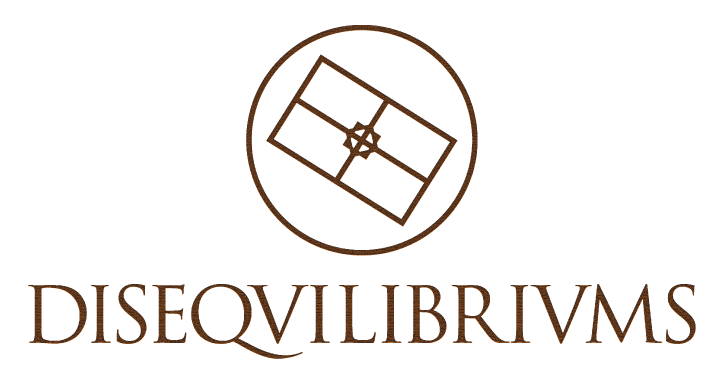EXPLANATION OF THE PROJECT
Using the tree as an analogy by way of summary, an approach which is later illustrated, the project has four fields of development
ROOTS
The three basic elements of historical legacy which inspired the story.
TRUNK
The pivotal creative area that underpins the progressive publication of the Disequilibriums trilogy.
PROPS
The creative areas that support the main creative area, which enable the development of various cultural sectors, and with it through lean start-up methodology, find the public, users or clients of the project (external factors supporting the growth of the tree).
BRANCHES
Utopian objectives for the project to create a community of users sharing knowledge of historical legacy and disequilibria in towns and cities (the branches of the tree) with the objective of bringing about social change when confronting similar problems in the future.
A good project needs a good story. Where was Disequilibriums born?
Everything revolves around Rome, its balance in a historical context and its ‘disequilibrium’ produced in the fictional story.
The story starts with the discovery of two real elements in the city of Zaragoza (Spain) and a coincidence with three other European cities:
The Emperor Augustus designed the city of Caesaraugusta (present-day Zaragoza) with the Cardus and the Decumanus of the city tilted.

One of the translations of the right-hand side of the Roman ashlar found on the Valencia Gate in Zaragoza enabled us to construct the story of the Disequilibriums trilogy.
London, Paris and Bergamo also have a tilted Cardus and Decumanus.

In the fiction
“In its geographical expansion and lust for power, Rome searched for a place to build a holy city, a place which would meet special conditions, a place which would represent the origin of the Cosmos on earth and a place where the balance between the four elements in nature - earth, water, air and fire - would be achieved.
They found that place in Hispania, and on 23rd December in the year 14 BC they founded a city there. Its people have achieved special characteristics because the balance created by Rome has always been maintained.
But now that balance is breaking...”
THIS IS WHERE DISEQUILIBRIUMS WAS BORN
Choice of the Title of the Project
The choice of the Project title was made taking into account new technologies. In this case, there were no already taken domains for the name. Although initially we considered names like ‘equilibriuo’ or ‘equilibrium’, we finally opted for an invented word: ‘Disequilibriums’. We used artistic licence here, since in English the plural form of ‘disequilibrium’ is ‘disequilibria’ and so, ‘disequilibriums’ has no meaning.
After choosing the name and reserving the web domain, we set about developing the platform
Writting, editing and correction
Before doing the final editing, we had to correct the written novel and, afterwards, the publishers carried out the following actions:
Book cover and logo
The logo of the Project was designed and has been used subsequently on different transmedia appearances. It is a rectangle representing the Roman wall in the city of Zaragoza, ancient Caesaraugusta. On it, two lines crisscross: the Cardus and the Decumanus of the city. The entire rectangle and its internal lines are tilted, as it is the solstice rectangle of the city and later constructed.
Collaborators on the Transmedia Project
Because in unity, there is strength
Graphic Design.
The book cover was designed by the artist Joaquín Macipe Costa, (Ariño – Teruel).
Web Design and creation
The company, Tecnovalia (Zaragoza)
Translation into English
Translation into English: Translation services were carried out by Rose Marie Cartledge, through the company ARIMAROSA LANGUAGE SERVICES, based in York (UK)
Videogame
Design, programming and publication of the Disequilibriums game were carried out by David Begueria (Zaragoza) on ANDROID.
Graphic Design
The Disequilibriums logo and brand were designed by designer Joan de Tomas through the company Frombcn consulting empresarial S.L. (Barcelona).
Photography
Photographs were donated by members of the board of governors of the Fundación, and the rights to a photograph by professional photographer Begoña Simon (Zaragoza) were purchased.
Music
The music was composed and donated to Fundación ECUUP by composer and sound designer Jorge Sarnago of 8NOISE (Zaragoza).
New communication media /digitalised content
Ongoing work is carried out by the company Emprender Comunicación S.L.U. (Zaragoza)


